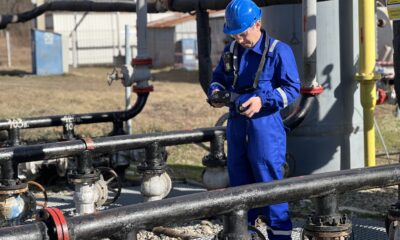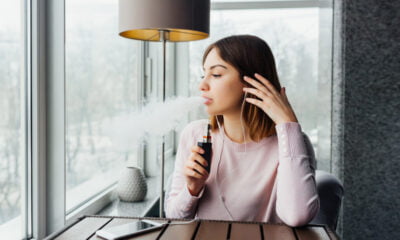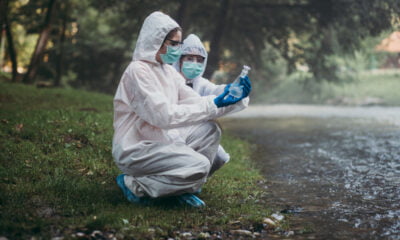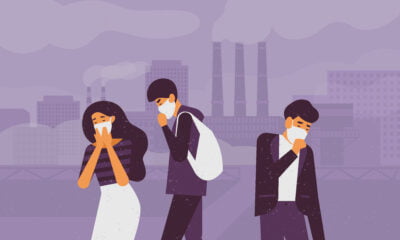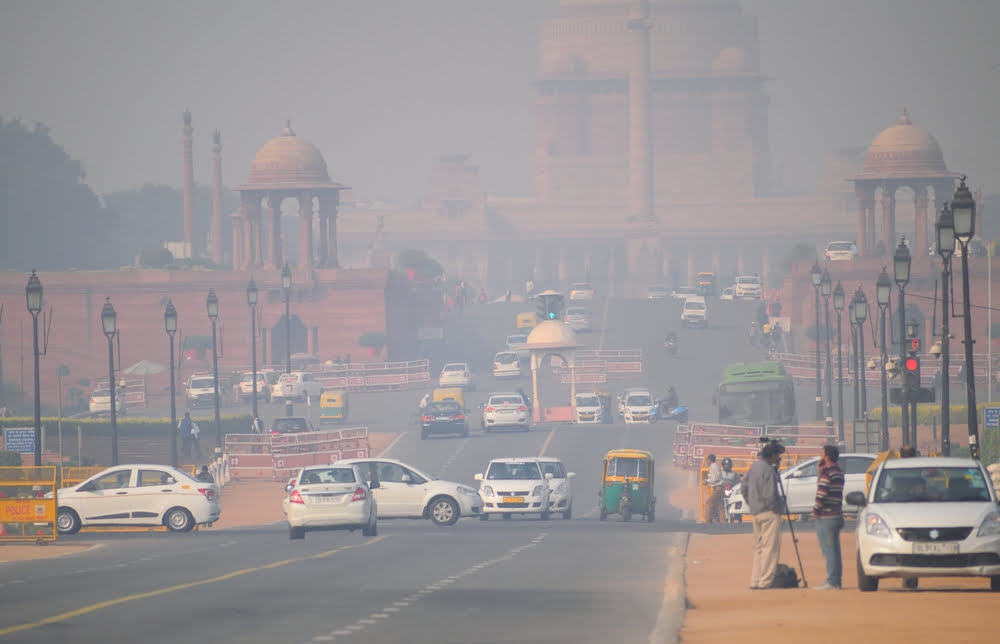

Environment
What Are the Leading Sources Causing Delhi’s Air Pollution?
Global air pollution is rising to horrify levels. But it is worse in India than many other countries.
India’s capital, New Delhi, is among the world’s metropolitan agglomerations with the most toxic air. Delhi’s air quality index (AQI) every winter is down over 500, whereas safe air for breathing is between 0 and 50. In 2022, the capital recorded only two ‘good’ air days. Even bordering areas, such as Noida, Gurugram, Faridabad and Ghaziabad, are struggling with air pollution.
Air quality relies on a rise in temperature during the winter season. When there is a drop in temperature, the air quality also falls. The air close to the surface comes down, which does not allow the denser air to mix with the warmer layer. Due to this, air traps the pollutants, and the resultant rise in pollution during winter air becomes denser. Vehicle emissions and construction actions throughout the year are the major factors causing breathing problems in Delhi. They can also lead to cancer, which is linked with air quality.
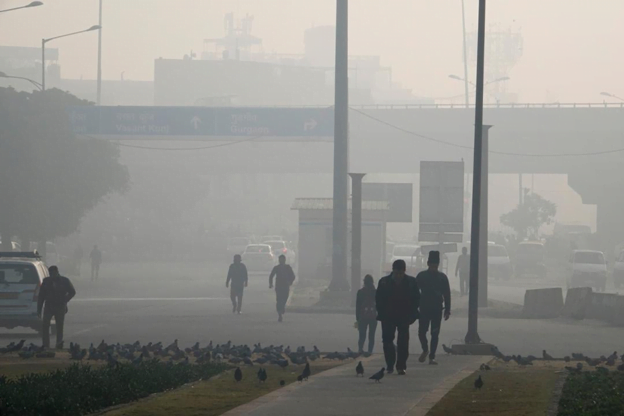
What is Polluting Delhi’s Air?
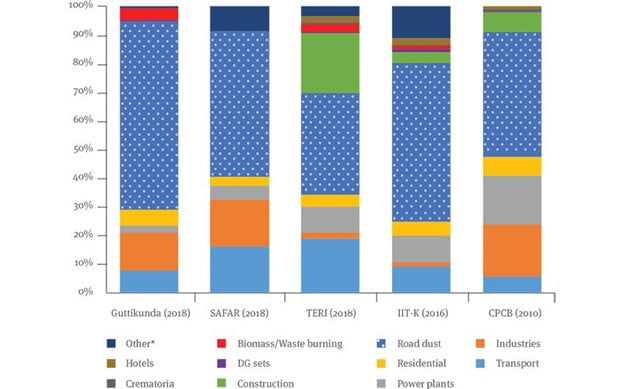
India wants to do more to improve the environment. The country pledged to reduce emissions by 35% by 2030. However, it has not done nearly enough yet and the environment is doing very poorly.
According to the CSE report, 2local sources generated around 32.9 % of the pollution in Delhi from October 21 to 26. After the Diwali celebrations, many cities are gasping for breath because of the massive lighting of firecrackers. The problem is worsened mainly in the winter when burning crop residues in neighbouring states overlap with cooler temperatures and trap toxic gasses. That smoke travels to New Delhi, leading to a surge in pollution in the city. Here are the leading causes of polluting Delhi’s air –
- 3Vehicular emissions contributed around 51% to the PM2.5 levels in Delhi. The daily share of vehicular emissions ranged from about 49.3% to 53% over the week.
- Residential sources followed this at 13% and industrial sources at 11%.
- Construction activities contributed around 7 % to PM2.5, followed by 5% each from waste burning and the energy sector.
- Road dust contributed around 4 per cent to PM2.5 levels.
- According to the System of Air Quality and Weather Forecasting And Research (SAFAR), stubble burning has increased by 19-22% to PM2.5 Delhi’s pollution.
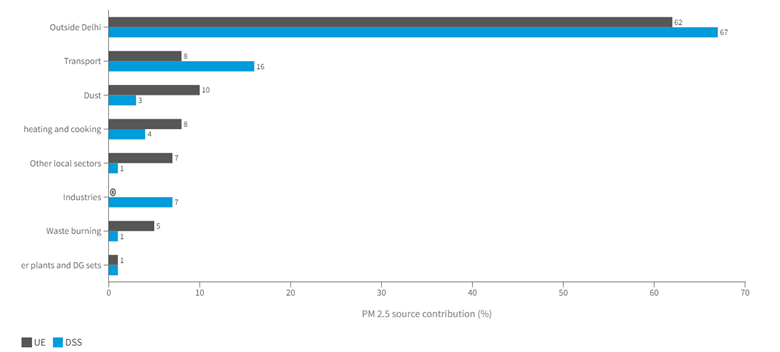
Paddy straw burning in Punjab and Haryana in October and November caused Delhi’s increased air pollution levels.
As the window for the Rabi crop is significantly less after the paddy harvest, farmers set their fields on fire to quickly divest the crop residue. There are manual and automatic ways to compose straw, but since the procedure is expensive and takes more time, farmers instead go for the traditional stubble burning.
How can Delhi Control Air Pollution?
According to a study by the New Delhi-based think tank, Council on Energy, Environment and Water (CEEW), Delhi can limit pollution through pre-emptive emission control measures. To achieve this, it should move from a system that enforces the GRAP as an ex-post measure to one that can prevent the occurrence of high pollution episodes. It also recommends measures like integrating air quality forecasts with a decision support system. The air quality forecast systems developed by the Indian Institute of Tropical Meteorology (IITM) should be used to issue public health warnings.
To combat air pollution, the Commission for Air Quality Management (CAQM) implements restrictive measures under Graded Response Action Plan (GRAP). 4There are four stages of GRAP, and the measures and actions to be taken under them are classified. Let’s find out what it means –
Stage I (AQI 201 to 300) –
At this stage, the government bans all construction and demolition activities of a plot size of 500 square meters or more that are not registered on government-mandated web portals. Agencies must ensure that all solid waste is lifted from a dedicated dump site and none is dumped on open land. Heavy fines will be imposed for openly burning municipal solid waste and biomass. Roads will be mechanically clean, and water will be sprinkled from time to time. Authorities will ensure that thermal power plants comply with emission norms and that industries use approved fuel well. Guidelines for using anti-smog guns at construction sites are also to be issued. A firecracker ban should be followed per the respective social codes’ direction.
Stage II (AQI 301 to 400) –
The use of coal and firewood eateries would be banned. Authorities would need to ensure an uninterrupted power supply to discourage the use of generators. Increase parking fees to discourage private transport. The resident welfare associations would be required to provide electric heaters to security staff to prevent solid waste and biomass burning.
Stage III (AQI 401 to 450) –
When the condition is severe, the frequency of cleaning road water would be sprinkled daily before peak traffic hours. Car authorities will Levy different rates on public transport services to encourage off-peak travel. A strict ban will be enforced on all construction activities except ongoing construction on railways, metro, hospitals and airports.
Stage IV (AQI above 450) –
When the air quality rises to dangerous levels, entry of all trucks except those carrying essential commodities or providing essential services is to be stopped into Delhi. Four-wheeler diesel light motor vehicles would also be banned in Delhi and neighbouring states. Schools and educational institutes may be closed, and non-emergency commercial activities may be stopped. The tried and tasted odd-even system for vehicles may be implemented.
Air Pollution and Human Health Impact in Delhi:
Today, Delhi is among the world’s most polluted cities. Exposure to air pollution can cause both short-term and long-term complications to health. Severe health difficulties occur when the air is laden with fine PM2.5 particles, quickly entering the body and settling in the lungs. 5 Alleviating air pollution and greenhouse gasses in Delhi without affecting development remains a crucial goal. Let’s see the human health impact of air pollution –
- Air pollution can increase the risk of underlying diseases, leading to weakness and a higher risk of short-term deaths in frail individuals.
- Malnutrition and diarrhoea due to food and water system degradation and an increased incidence of vector-borne diseases are some indirect impacts of climate change on human health.
- Particulate matter penetrates every cell and organ in our bodies, causing acute and chronic diseases, including asthma, strokes, heart attacks and dementia.
FAQS:
What are the primary things we can do to combat air pollution?
Delhi must shift to the public transport system by improving bus services and integrating metro stations. Other measures like encouraging cycling and walking should also be incorporated for short distances to keep it more sustainable.
How can Delhi pollution be controlled?
GRAP implementation, relaying air quality forecasts to the public via social media platforms, and improving the forecasts’ accuracy are some steps to manage Delhi pollution.
References:
- https://cowayindia.in/blogs/why-air-quality-in-delhi-ncr-deteriorate-during-october-november/13/
- https://indianexpress.com/article/cities/delhi/in-delhi-vehicles-are-worst-offenders-when-it-comes-to-pollution-8246066/
- https://www.orfonline.org/research/air-pollution-delhi-filling-policy-gaps/
- https://www.indiatoday.in/environment/story/delhi-ncr-air-pollution-winter-what-government-plans-to-do-grap-2285131-2022-10-14
- https://www.ceew.in/publications/climate-change-air-pollution-and-human-health-delhi-india

